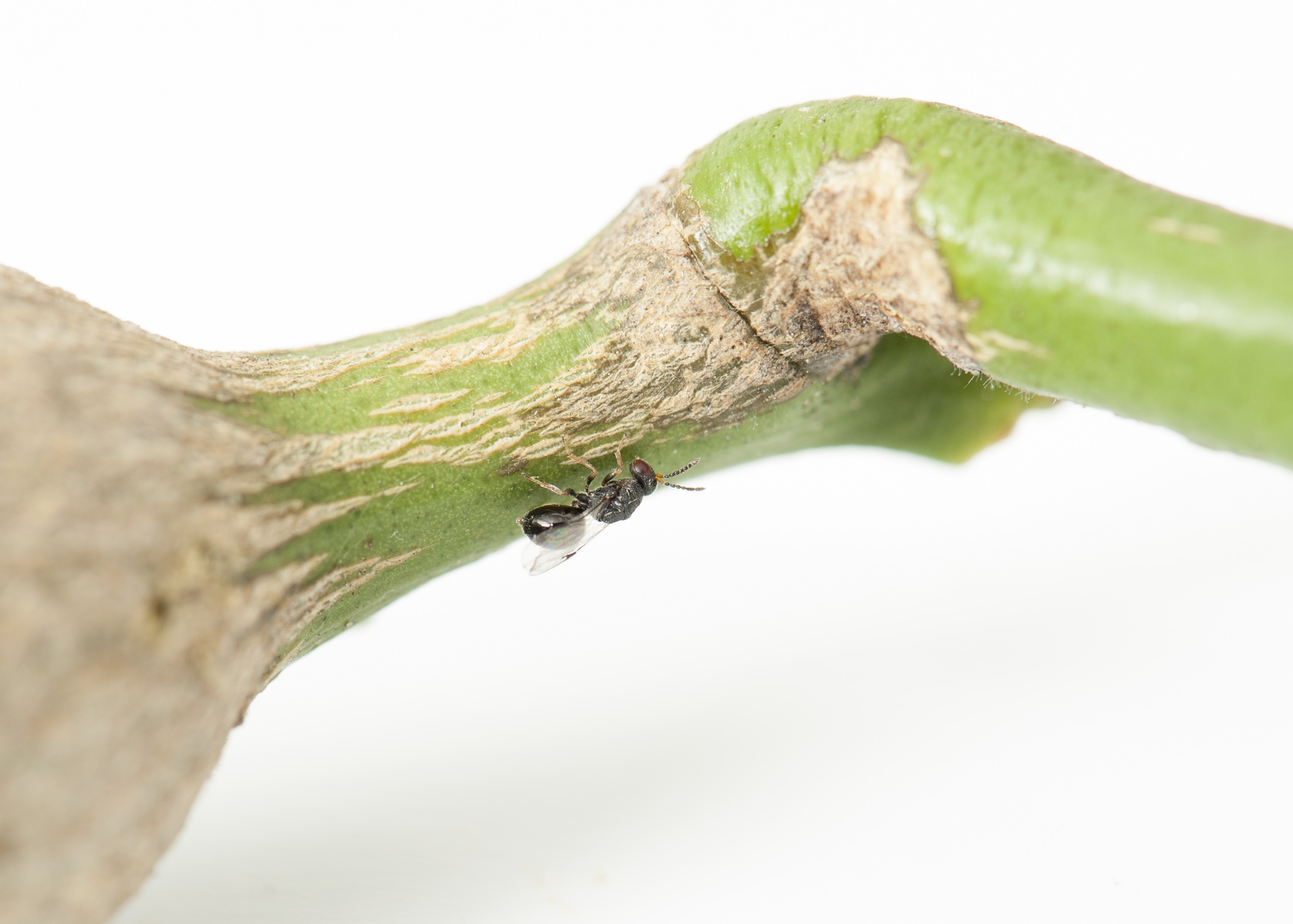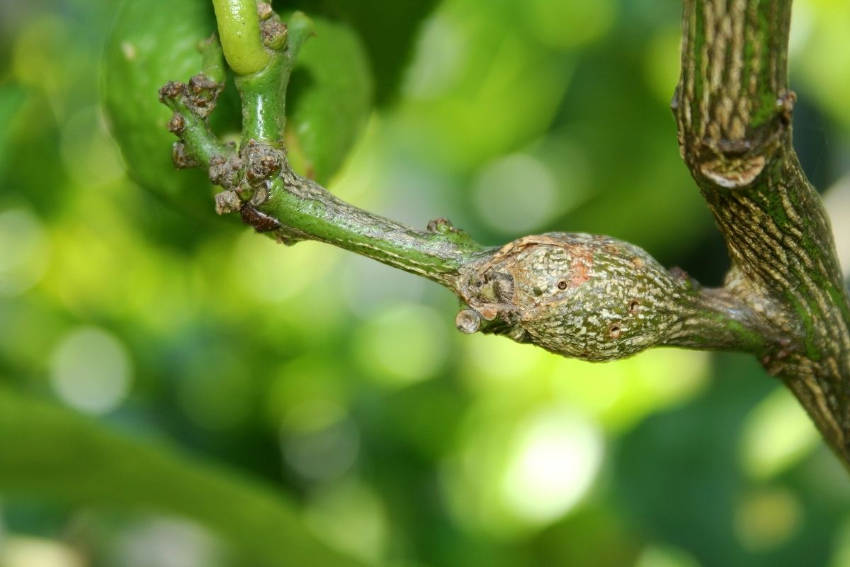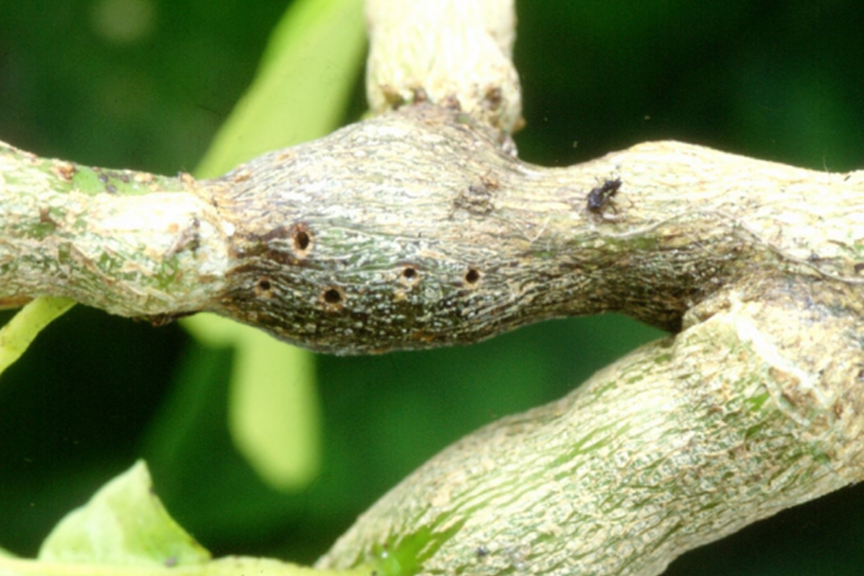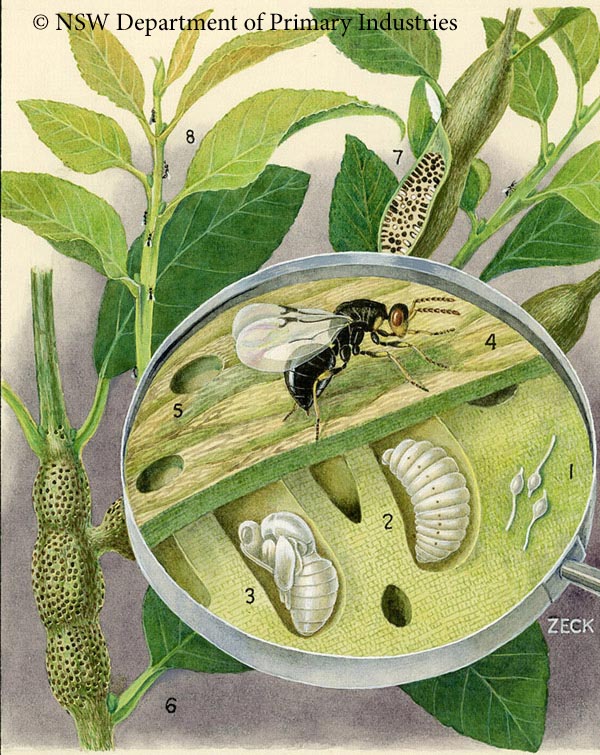
Citrus Gall Wasp Jim's Mowing NZ
Descri tion D General appearance The adult citrus gall wasp is small, shiny-black and 2.5 mm long. Larvae are 2 mm long, thickset, white and have no legs. Distinguishing features This is the only wasp that directly attacks citrus. The woody galls it forms are quite distinctive (see plate 17.2).

Citrus gall wasp PIRSA
What are they? Many of our more persistent garden pests are not native to Australia but citrus gall wasp is definitely an Aussie grown garden variety pest. Originally, this native wasp was limited to Queensland and northern New South Wales and its preferred host was native finger limes.

Citrus gall wasp Organic Gardener Magazine Australia
Find Citrus Gall Wasp stock images in HD and millions of other royalty-free stock photos, illustrations and vectors in the Shutterstock collection. Thousands of new, high-quality pictures added every day.

Citrus Gall Wasp Fruit Salad Trees
Find the perfect citrus gall wasp stock photo, image, vector, illustration or 360 image.. image, vector, illustration or 360 image. Available for both RF and RM licensing. BUY TWO IMAGES, GET THE LOWEST PRICE IMAGE HALF PRICE WITH CODE: 50%OFFNEXTIMAGE. Stock photos, 360° images, vectors and videos. Enterprise. Lightboxes. Cart. Hi there.
Citrus gall wasp in Western Australia Department of Agriculture and Food
Citrus gall wasp Citrus scale Mealybugs Rats (rodents) Snails and slugs 11 common lemon tree pests Here are the most common pests on lemon trees: 1. Aphids Aphids are small insects that can cause damage to your lemon trees. Aphids attach themselves to leaves, twigs, and other soft tissues where they suck sap from the plant's phloem.

Citrus gall wasp in Western Australia Department of Agriculture and Food
Although citrus gall wasp does not kill citrus trees the damage it causes is unsightly, and repeated attacks can weaken trees and make them unproductive. To control this pest, remove all galls from the trees by the end of August. Place the galls in a plastic bag, then seal the bag and put it in the garbage. After removing the galls, it is a.

Citrus gall wasp in Western Australia Citrus trees, Veggie garden, Citrus
Description Adult CGW are small (2.5 mm), shiny and black while larvae are small (2 mm), white and stocky without legs. Adult CGW emerge from within galls in late spring or early summer. Timing of emergence is largely determined by temperature; in warmer springs emergence of CGW is earlier than cooler springs.

Citrus gall wasp in Western Australia Agriculture and Food
Life cycle. Citrus gall wasp (CGW) has one generation a year (4 larval stages, a pupal stage and an adult stage; Figure 3). Adults lay eggs under the bark of new season citrus shoots. Most eggs are laid within the first 3 days of wasp emergence. Larvae hatch within 14-28 days and feed inside individually constructed cells.

Citrus Gall Wasp Prevention and Control The Seed Collection
The citrus gall wasp Bruchophagus fellis is a Australian native pest of citrus trees in Queensland and mid to north NSW. The natural host of this pest wasp is the Australian finger lime ( Citrus australasica ). This pest has found its way down as far south as Melbourne, and they've been travelling south on the back of a truck, I'm not joking!

Lumpy bits Citrus Gall Wasp Suburban Tomato
A 'gall' is formed when the female wasp lays her eggs in a branch of the tree, in which the young wasps develop. It will not actually kill the tree but it will weaken it, effecting the growth and productivity. The host tree for this wasp is the native finger lime but it will lay eggs in other citrus trees.

How to control citrus gall wasp Bunnings community
Citrus gall wasp is an endemic citrus insect pest in Australia that is spreading throughout the southern citrus growing regions in NSW. It is expected to hatch out of galls from mid October through to mid November. It is best to target control options with systemic insecticides at egg hatch that occurs in December.

Citrus gall wasp in Western Australia Department of Agriculture and Food
Citrus Gall Wasps are native insects that cause large grotesque woody galls to form on Citrus plants. The galls form in response to Citrus Gall Wasp larvae feeding inside the soft new growth of Citrus plants. Citrus Gall Wasp adults are shiny brown-black wasps about 2.5 mm long. Citrus Gall Wasp larvae are white legless grubs about 3 mm long.

Citrus gall wasp in Western Australia Department of Agriculture and Food
Appears in: spring to summer Type: insect ( wasp ) - Spread: worldwide - Infects: shoots, leaves, buds Size: 1/16th of an inch (2 mm) → 1/3 rd of an inch (8 mm), depending on species Generations per year - variable, up to a half-dozen

How to Get Rid of Citrus Gall Wasp in Your Garden Yates Australia
iNaturalist Australia. iNaturalist Australia is the product of a membership agreement between the iNaturalist Network and the Atlas of Living Australia and CSIRO.. The Atlas of Living Australia is made possible by contributions from its partners. It is funded by the Australian Government's National Collaborative Infrastructure Strategy and is hosted by CSIRO.

Lumpy bits Citrus Gall Wasp Suburban Tomato
Top: Citrus gall wasp (left) and its parasitic wasps (middle and right) (Photos by Jiahnua Mo, New South Wales Department of Primary Industries) Bottom: Lucerne seed wasp (left) and its parasitic wasps (middle and right) (Photos by Paul Langlois, Museum Collections: Hymenoptera, U.S. Department of Agriculture Animal and Plant Health Inspection Service Plant Protection and Quarantine program.

Illustration of Citrus gall wasp NSW Department of Primary Industries
Gall wasps, also traditionally called gallflies, are hymenopterans of the family Cynipidae in the wasp superfamily Cynipoidea. Their common name comes from the galls they induce on plants for larval development.